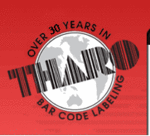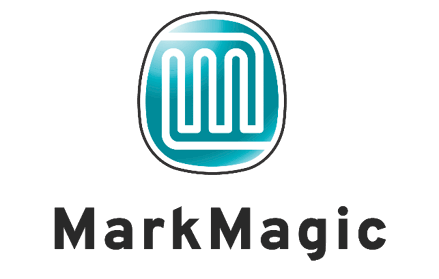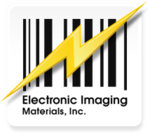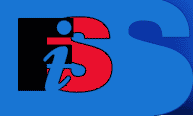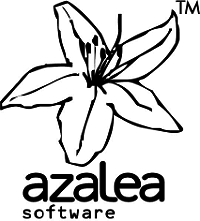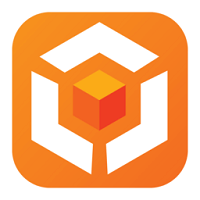What Is Barcode Software?
Barcode software, often known as barcode label creation software, is a digital application that helps businesses and organizations produce and manage barcode labels. These labels are utilized for tracking, inventory management, and sales transactions. The software enables users to create and print bespoke barcodes, as well as generate barcodes in a variety of formats, including QR codes and UPC codes.
Barcode software also includes data entry, database integration, and automatic data capture capabilities. One of the primary advantages of employing barcode software is that it eliminates the need for manual data entry, which reduces the chance of human error while increasing efficiency. This can save firms time and money, especially when dealing with a big volume of goods or transactions.
Barcode software also allows organizations to accurately track and manage inventory levels, delivering real-time information about product availability and movement. Another aspect of barcode software is the ability to encode various types of information in a barcode, such as product characteristics, prices, and expiration dates. This makes it a flexible tool for a variety of businesses, including retail, manufacturing, healthcare, and logistics.
Additionally, many barcode software solutions have customization possibilities, allowing customers to create labels that are consistent with their brand identity. When searching for the best barcode software, there are several important elements to consider. Ease of use and interoperability with existing systems are critical, as is the flexibility to scale the program as your organization expands. Some barcode software also includes analytics and reporting tools, which can provide useful insights into product performance and customer behavior.
What Are The Recent Trends In Barcode Software?
Barcode software has advanced significantly in recent years, making it an indispensable tool for enterprises of all sizes. There has been a trend toward automation, increased use of data analytics, and a growing need for cloud-based solutions. In this area, we will look at the most recent trends in barcode software so that customers may make informed purchasing selections.
1. Automation: One of the most significant trends in barcode software is automation. Businesses are seeking for ways to improve their inventory management procedures as e-commerce grows and customers anticipate faster and more accurate order fulfillment. Barcode software automates operations like inventory tracking, stock level monitoring, and order processing, allowing personnel to focus on more vital duties.
2. Data Analytics: Data analytics is becoming an important component of barcode software. Businesses that are able to collect and analyze huge amounts of data might obtain significant insights into their inventory and supply chain processes. This enables them to make data-driven decisions, pinpoint areas for improvement, and optimize inventory levels to match client demand.
3. Cloud-Based Solutions: The use of cloud-based barcode software has grown significantly in recent years. This trend is fueled by the desire for accessibility and real-time updates. Businesses can use cloud-based solutions to access inventory data from anywhere, at any time, and the system will update in real time, delivering accurate and up-to-date information.
4. Mobile Support: Another development in barcode software is the growing popularity of mobile devices. With technological advancements, organizations may now utilize smartphones and tablets as barcode scanners, reducing the need for dedicated hardware. Employees may scan barcodes while on the fly, which not only saves money but also increases inventory management flexibility.
5. Integrations: The ability of barcode software to integrate with other business systems has made it more powerful than ever before. This includes POS systems, CRM software, and accounting systems. The incorporation of barcode software into these systems simplifies operations, minimizes human data entry, and boosts overall efficiency.
Benefits Of Using Barcode Software
Barcode software is a modern technology that has revolutionized the way businesses manage their product inventory and sales. This software offers a wide range of benefits that can significantly improve the efficiency and accuracy of your business operations. Let's dive into the key benefits of using barcode software and see why it is an essential investment for any business.
1. Improved Inventory Management: One of the primary benefits of using barcode software is its ability to streamline and automate your inventory management process. With the help of barcodes, you can quickly and accurately track your inventory levels, which eliminates the risk of human errors and ensures that you always have the right amount of stock on hand.
2. Increased Efficiency: Barcode software can significantly increase the efficiency of your business operations. By simply scanning a barcode, you can retrieve all the necessary information about a product, such as its price, quantity, and location. This eliminates the need for manual data entry, which can be time-consuming and prone to errors.
3. Enhanced Data Accuracy: Manual data entry is not only time-consuming but also prone to errors, which can lead to costly mistakes. Barcode software eliminates the need for manual data entry, making your data more accurate and reliable. This ensures that your business decisions are based on correct and up-to-date information.
4. Cost-Effective: Investing in barcode software can be a cost-effective solution for managing your business. This software reduces the manual labor required for tasks such as inventory management and data entry, which decreases the likelihood of errors and saves you both time and money in the long run.
5. Real-Time Tracking And Monitoring: Barcode software enables you to track and monitor your inventory in real-time. This means that you can quickly identify any potential issues such as low stock levels or expired products and take immediate action to avoid disruptions in your supply chain.\
6. Better Customer Service: Using barcode software can also improve the overall customer experience. With accurate and real-time inventory information, you can satisfy your customers by quickly fulfilling their orders and ensuring that they receive the right products on time.
7. Integration With Other Systems: Barcode software can seamlessly integrate with other business systems such as accounting and billing, providing a comprehensive and connected solution for your business. This enables you to have a better overall view of your business operations and make more informed and data-driven decisions.
Important Factors To Consider While Purchasing Barcode Software?
When selecting barcode software, you need carefully evaluate a few critical elements to ensure that you get the best option for your company's needs. With so many options on the market, it can be difficult to make a decision. To help you make an informed decision, below are the most crucial elements to consider when selecting barcode software.
1. Purpose: The first step in selecting barcode software is to determine your individual requirements and the intended use of the software. Barcode software can range from basic barcode production to sophisticated inventory management systems. As a result, understanding your business needs and the goals you hope to achieve with the software is critical.
2. Compatibility: Before making a purchase, make sure that the barcode software works with your current systems and hardware. This comprises the operating system, label printers, and other hardware. Incompatibility can cause technical challenges and limit the software's functionality.
3. Usability: Barcode software should be easy to use, particularly for individuals without technical knowledge. Complex and difficult-to-navigate software may lead to errors and increased costs in the long term. To ensure ease of adoption, buy software with an accessible interface and detailed user guide.
4. Scalability: As your company expands, your barcode software should be able to handle the additional workload and data volume. Choosing a scalable solution can save you the trouble of replacing your software in the future. Consider your company's growth potential while making the acquisition.
5. Integration: Look for barcode software that works flawlessly with your current systems and apps. This enables efficient data sharing while eliminating the need for manual data entry, lowering the danger of human mistake.
6. Customization: Each organization has distinct barcode requirements, and the software you select should have customization choices to meet those needs. From unique label designs to specialized features, ensure that the program can be customized to meet your company's demands.
7. Assistance And Training: It is critical to have proper technical assistance and training when utilizing barcode software. Before making a purchase, ask the software provider about the type of support and training it offers. This will ensure that the software runs smoothly and efficiently. Consider these crucial aspects when selecting barcode software for your business. Evaluate your requirements and budget carefully before selecting software that not only fits your immediate demands but also provides for future growth and efficiency.
What are the key features to look for in Barcode Software?
Barcode software is a sophisticated tool that enables organizations to rapidly generate and scan barcodes for inventory and tracking purposes. With the increasing demand for automation and efficiency in the retail, manufacturing, and logistics industries, selecting the correct barcode software is critical to guaranteeing smooth operations and accurate data management.
we'll go over the important things to look for when selecting barcode software for your business.
1. Barcode Generation Capabilities: The primary goal of barcode software is to create unique and scannable barcodes for items, inventory, and assets. When looking for barcode software, make sure it supports a number of barcode formats, such as 1D, 2D, and QR codes, to meet your specific requirements. It should also enable for customisation of the barcode design, such as color, typeface, and size.
2. Barcode Scan And Integration: A reliable barcode program should be able to not only generate barcodes but also scan them efficiently. Look for software that allows you to scan manually as well as automatically, such as with handheld scanners or a webcam. It should also be able to interact with your existing systems, such as inventory management or point of sale systems, in order to streamline operations and ensure proper data transfer.
3. Data Management: Barcode software should serve as a centralized location for managing and organizing your barcode information. It should make it simple to create and manage product databases, which include product information, photos, and pricing. The program should also allow you to import and export data, as well as generate reports, to help you manage and analyze your inventory.
4. Compatibility And Usability: When selecting barcode software, make sure it is compatible with the hardware and operating systems used in your company. It should also feature an easy-to-use interface to help your employees learn quickly. Look for software that includes extensive training materials and great customer support to help with any technical issues.
5. Additional Features: Barcode software frequently includes extra functions such as batch printing, barcode verification, and label personalization. Consider your individual requirements and look for software that includes these characteristics, since they can improve the efficiency and accuracy of your barcoding activities.
Why Do Businesses Need Barcode Software?
Barcode software is a critical tool for organizations of all sizes in a wide range of industries. This software, often known as barcode label design software or inventory management software, generates and manages barcodes for products, inventory, and documents. It uses cutting-edge technology to improve workflows, increase productivity, and help organizations save time and dollars.
One of the primary reasons why firms use barcode software is to improve their inventory management procedures. Barcodes enable businesses to quickly track and monitor their inventory levels in real time, ensuring that they always have the proper products in stock and avoiding stockouts. Barcode software can also automate inventory counting and updating, reducing human error and manual data entry time.
Furthermore, barcode software helps firms decrease operational expenses by improving process accuracy and efficiency. Barcodes can help organizations speed up their data entry and retrieval operations, resulting in higher productivity and lower labor expenses. Barcode software can also interface with other corporate systems, like as accounting and warehouse management, to help expedite processes and save resources.
Another benefit of barcode software is that it offers firms valuable insights and data. Businesses can use barcode monitoring to assess sales trends, discover their most popular products, and make informed decisions about their inventory and offerings. This data can also assist organizations enhance their marketing and sales efforts, as well as better understand their customers' behavior.
Barcode software also helps to ensure product authenticity and avoid counterfeiting. Businesses may easily identify and trace their items along the supply chain by assigning unique barcodes to each one, guaranteeing that customers obtain genuine and safe products. This maintains the company's reputation while also increasing customer trust and loyalty.
How Much Time Is Required To Implement Barcode Software?
The time required to adopt barcode software varies based on a number of factors, including the software's complexity, the size of your firm, and the type of barcode system you want to integrate. The implementation procedure can last anything from a few days to many weeks. The first step in adopting barcode software is to assess your company's needs and goals.
This will help you choose the proper software and ensure a seamless implementation procedure. Next, install the program on your computer systems and configure the relevant devices, such as barcode scanners and printers. Training your employees on how to utilize barcode software is an important part of the implementation process. This can take anywhere from a few hours to a few days, depending on the software's complexity and the amount of personnel to be educated.
To guarantee a successful implementation, adequate time must be set aside for effective training. The next step is to enter your product information, including SKUs, prices, and descriptions, into the barcode software. This can take a long time, particularly if you have a huge inventory. It is advised that adequate resources be allocated and plans be made to address any data migration problems.
Finally, test the system to confirm it is working properly and make any necessary changes or adaptations. This testing process can be a few days or weeks, and it is critical to have a committed staff to monitor and troubleshoot any issues that may develop.
What Is The Level Of Customization Available In Barcode Software?
Barcode software provides a wide range of customization possibilities to fit the unique demands of enterprises. It allows customers to customize the barcode layout, font, color, and size to meet their branding and labeling needs. Furthermore, some barcode software has additional customization options including data encoding, error correction, and barcode orientation.
One of the most important parts of customization in barcode software is the option to select from a variety of barcode types, including UPC, Code 39, Code 128, and others. This enables businesses to choose the best appropriate barcode for their products and industry. Furthermore, barcode software enables users to create and generate many barcodes simultaneously, saving organizations time and effort.
Some software also includes batch processing features, allowing users to create thousands of barcodes with a single click. Data encoding is another key part of customization in barcode software. This function allows businesses to encode a variety of information into barcodes, including product data, serial numbers, expiration dates, and more.
Scanning the barcode allows for quick and precise retrieval of this information, improving inventory management and tracking efficiency. Furthermore, some barcode software has the option of including human-readable text beneath the barcode. This is useful for organizations who need to display additional information beside the barcode, such as product names or descriptions.
The text's font, size, and position can all be adjusted for a more coherent and professional appearance. Finally, barcode software enables firms to change the printing format of barcodes. This includes the ability to change the margins, page size, and print quality so that the barcode is printed correctly and clearly. Finally, barcode software offers broad customization to meet the unique demands of enterprises.
Businesses can personalize their barcodes in a variety of ways, including barcode types, data encoding, and printing formats. Businesses that use the correct barcode software can improve their inventory management, increase efficiency, and build their brand image.
Which Industries Can Benefit The Most From Barcode Software?
Barcode software can benefit a wide range of industries, allowing organizations of all sizes to optimize operations, increase productivity, and cut costs. Whether you own a small retail store or a large manufacturing facility, using a barcode software system can significantly improve your business processes. In this section, we'll look at which sectors can gain the most from barcode software and how it can help them enhance their daily operations.
1. Retail: The retail business is one of the most likely to gain from barcode software. Barcode software allows businesses to accurately track their inventory in real time, ensuring that they always have the right products in stock and avoiding losses due to overstocking or out-of-stock situations. With the capacity to generate and print product barcodes, businesses can quickly and efficiently scan items during checkout, reducing human error and speeding up the payment process. Furthermore, barcode software can provide significant sales data and insights, allowing retailers to make more informed purchasing and marketing decisions.
2. Warehouse and Distribution: Barcode software has revolutionized the warehouse and distribution industries. With so many things being kept and distributed every day, manual inventory tracking and management can be time-consuming and error-prone. Barcode software makes it easier for warehouses to track their inventory properly and in real time. This eliminates the possibility of overstocking, understocking, and product expiration, guaranteeing that consumers' orders arrive on time and as planned.
3. Healthcare Industry: In the fast-paced and heavily regulated healthcare industry, accuracy and speed are critical. Healthcare facilities can use barcode software to keep inventory levels accurate, track medical supplies and equipment, and eliminate errors. Healthcare practitioners can also employ barcode tracking to monitor drugs, ensuring that the correct medications are administered to the correct patients at the correct time. This not only improves patient safety, but also lowers the likelihood of costly, avoidable errors.
4. Manufacturing Industry: In the manufacturing industry, where efficiency is critical, barcode software helps improve operations, shorten production times, and eliminate waste. Barcode scanning can track materials and products throughout the manufacturing process, delivering real-time data on inventory levels, raw material utilization, and production costs. This data enables manufacturers to make more educated decisions regarding their manufacturing processes and optimize their supply chain.
5. Transportation And Logistics: Barcode software has the potential to dramatically help the transportation and logistics industries. Companies that use barcodes to track shipments and deliveries can increase their delivery accuracy and ensure that products arrive on time. Barcode software can also help with communication among all parties involved in the transportation process, minimizing delays and optimizing operations.
Conclusion
To summarize, investing in high-quality barcode software can significantly improve the efficiency and accuracy of your business operations. By completing extensive research and carefully examining your individual requirements, you can find the ideal software solution for barcode scanning and labeling. Before making a purchase, examine the type and complexity of barcodes supported, integration capabilities, and usability.
Look for advanced features like data analytics, inventory management, and cloud-based accessibility to help you improve your barcode procedures. Furthermore, it is critical to select a recognized and trustworthy software vendor with a track record of providing excellent products and customer service. This will enable the seamless implementation and long-term success of your barcode software.
Remember that barcode software isn't a one-size-fits-all solution. To find the best software for your specific needs, you must first assess your business's objectives and goals. With the appropriate barcode software, you can simplify operations, improve data accuracy, and boost overall productivity and profitability.
We hope that this buyer's guide has given you useful insights and information to help you make an informed decision when choosing barcode software. Remember the important considerations described in this book, and you'll be well on your way to finding the ideal software solution for your company. Happy shopping!



